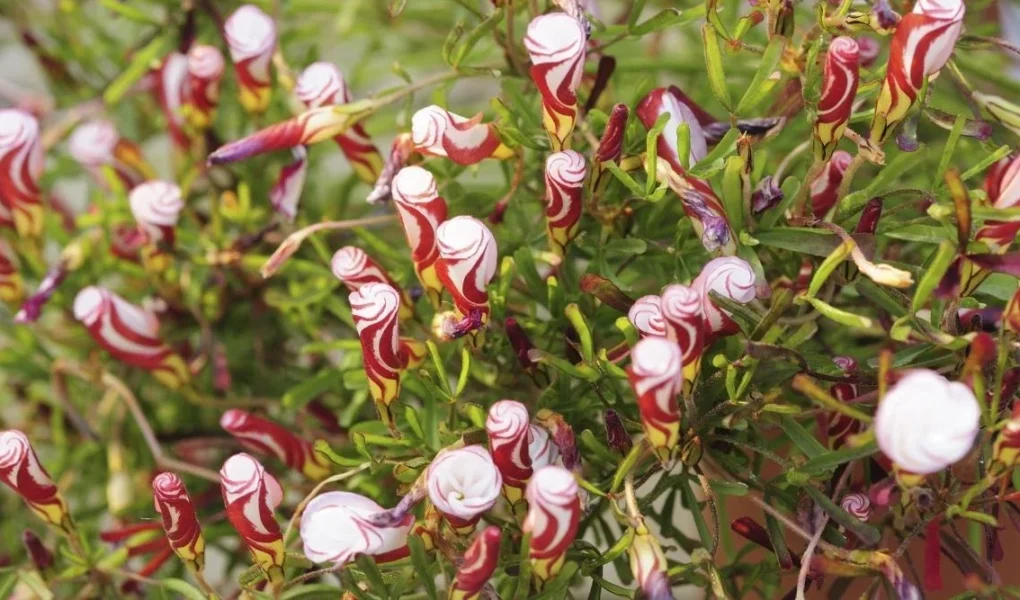iwillnotbebroken.org – The Candy Cane Sorrel (Oxalis versicolor) is a charming and eye-catching flower that easily stands out in any garden with its unique appearance. As its name suggests, the petals of this flower have a distinct candy cane-like pattern, making it an irresistible choice for those looking to add a bit of whimsy and color to their garden or landscape. Here’s an exploration of the fascinating traits and growing requirements of this lovely flower.
Botanical Description
Candy Cane Sorrel is a perennial plant that belongs to the Oxalis family. The plant typically grows 4 to 6 inches in height, with clover-like green foliage that complements its stunning blooms. The flowers of this species are its most striking feature: each flower has white petals with a distinctive red or pink stripe along the edges, giving it a candy cane appearance before the blooms fully open. When the sun is out and the flowers unfold, they reveal pure white interiors, providing a delightful contrast to the striped exterior.
Habitat and Growth Conditions
Native to South Africa, Candy Cane Sorrel thrives in sunny and well-drained environments. It can be grown both outdoors and indoors, provided that the growing conditions are met. It prefers sandy or loamy soil and needs plenty of sunlight to bloom to its full potential. This flower is an excellent choice for rock gardens, borders, or as part of container displays where it can receive full sun.
Although it loves sun, it’s best planted in regions with mild winters, as it is not frost-tolerant. In cooler climates, it’s often grown as an annual or brought indoors during the colder months.
Ecological Importance
Like other Oxalis species, the Candy Cane Sorrel attracts pollinators such as bees and butterflies, helping to support local ecosystems. Its flowers provide nectar, and its small stature makes it a suitable companion for other low-growing plants. Though not as ecologically essential as native wildflowers, it still offers benefits in promoting biodiversity in garden environments.
Cultivation and Care
Candy Cane Sorrel is relatively easy to care for, making it a popular choice for gardeners of all skill levels. It is commonly propagated by bulbs, which can be planted in the fall or early spring. When planting, ensure the soil is well-draining to avoid waterlogging, which can damage the bulbs.
Watering should be moderate, with more frequent watering during hot, dry periods, and less during cooler months. These plants do well in containers and can also be a stunning addition to window boxes where they can bask in sunlight.
In terms of care, regular deadheading of spent flowers will encourage more blooms throughout the growing season. Fertilization with a balanced, slow-release fertilizer during the active growing period can promote healthy foliage and flower production.
Ornamental Uses
The Candy Cane Sorrel’s vivid color combination and compact growth make it perfect for ornamental planting. Its ability to create visual interest even when not in full bloom (as the striped buds are attractive on their own) makes it a versatile choice for various garden designs. It works well in alpine or rock gardens, mixed borders, or as a unique focal point in container plantings.
Conclusion
With its delightful red and white striped petals, the Candy Cane Sorrel adds a splash of festive cheer to any garden. While it requires specific growing conditions to thrive, its ease of care and beautiful, whimsical appearance make it a favorite for gardeners looking to add a bit of joy and color to their outdoor space. Whether planted in rock gardens, borders, or containers, the Candy Cane Sorrel is sure to turn heads and bring a smile to anyone who sees it.




